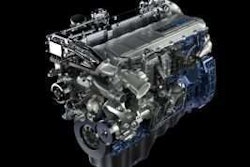The concept of universal pricing doesn’t exist in commercial truck sales. From engine and vehicle spec requests to make and model price variance, it’s not uncommon for one dealer to sell two of the same model year trucks on the same day at considerably different prices.
Fortunately for dealers, that price variance isn’t new to the marketplace. Customers are well aware of how their wants and needs affect the price quotes they receive for prospective purchases.
But that variability doesn’t excuse price inequities. When customers tell you want they want in a truck, they expect you to promptly reply with a correct price.
How you respond is an important aspect of a sale, says George Papp, professional sales consultant, former director of sales development at Arrow Truck Sales and teacher of the Used Truck Association’s (UTA) “Selling for Success” training seminar.
If you want to sell trucks, you first have to sell customers on your price.
To do that, Papp warns salespeople to be aware of the negative scenarios that can come out of a poorly presented price.
Purchasing a medium- or heavy-duty truck is a significant investment and a salesperson’s responsibility and influence during the process cannot be taken lightly.
Hypersensitive customers can be turned off by poor body language and indifference; veteran customers are capable of spotting mistakes when a salesperson isn’t focused.
That means a poorly worded response, delayed reaction or incorrect quote during the pricing stage significantly hinders a salesperson’s ability to complete a transaction, Papp says.
“We make this job very difficult. We want to give them a price and have them take it,” he says. “It doesn’t work like that.”
He says some pitfalls to avoid when presenting a price are modifiers before a reveal, “Our regular price is …” or unrealistic guarantees such as “Tell me where we need to be …,” which can weaken a customer’s confidence in your price.
Papp instead advises salespeople to be receptive and sparse with words when listening to a customer’s specification requests leading up to a potential sale. The more time a salesperson spends listening and noting a customer’s needs, the quicker they can turn that information into an accurate price quote, Papp says.
He also recommends being brief with responses following customer inquiries. For example, a customer request for warranty information should be met with a quick outline of the program, and its strongest features. But instead of taking that opportunity to highlight the program in unnecessarily specific detail, Papp advises salespeople to instead modify the question as a rebuttal.
If a customer wants to know about your warranty program, ask why. Their response will provide a better understanding of the coverage they need and the affect that will have on the overall sales cost.
Once a customer has completed spec’ing his potential new truck, Papp adds that it’s a good idea to go over their requests one final time before presenting a price. This gives a salesperson a second chance to double check their notes and eliminate any confusion between the two sides.
A straight forward approach works best, he says, providing the example “Before I give you the price, I’d like to make sure I’ve clarified everything it includes” and going from there.
After that is completed, the price can be presented.
Papp says he likes to present the price and options included at once.
“You told me you were most interested in this, this and this. Is that correct?” he says while mimicking a price presentation. “With that in mind, let me tell you how our product can help you achieve those things. It will provide you this, this and this, and all for this price. Plus, you will [receive] this, this and this as well.”
By presenting everything together, Papp says customers get to hear the services included in their potential purchase price and the effect it has on the base price. When customers are shaken or concerned, he says salespeople should simply ask what’s wrong and let the customer respond.
“Let them tell you why” it’s not working for them, he says. And if a customer requests a spec change, follow the process used initially when acquiring information to adjust and re-present your price.
A customer talking price and spec’ing wants to buy. By presenting your price effectively, you can move them even closer to the dotted line.










